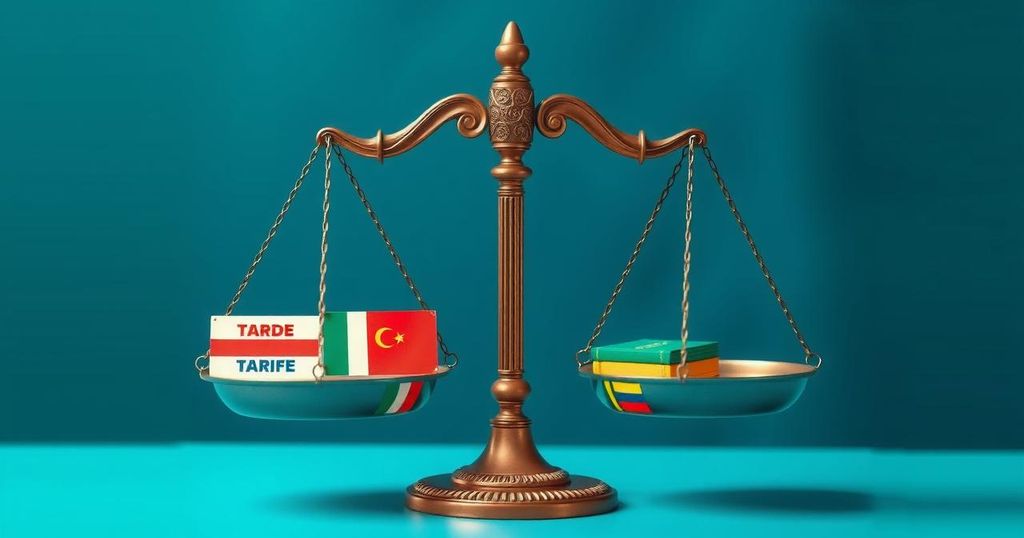President Trump plans to implement reciprocal tariffs on April 2, targeting all countries to address trade imbalances. U.S.-India discussions aim to facilitate a bilateral trade agreement, with the goal of increasing trade significantly by 2030. Indian industries express concern about the impact of these tariffs, as the U.S. is India’s largest trading partner.
U.S. President Donald Trump is set to implement reciprocal tariffs starting April 2, targeting all countries rather than just 10 to 15 nations. Trump aims to use these tariffs as part of a strategy to rebalance trade and boost U.S. manufacturing, while also seeking funds to support domestic initiatives, including tax cuts.
The specific countries and the measurement metrics for calculating tariffs are still unclear. White House economic adviser Kevin Hassett noted that tariffs would focus on countries with significant trade imbalances, but he didn’t provide details on which nations would be included. The ramifications of these tariffs could lead to market instability, prompting fears of a trade war.
India has engaged in discussions with the U.S. regarding a proposed bilateral trade agreement (BTA) and plans to launch sectoral talks soon. Efforts are geared towards increasing trade access and reducing barriers across various sectors. The two nations aim to finalize the first phase of this agreement by fall 2025, with targets to boost bilateral trade considerably.
The U.S. has requested duty concessions in sectors including industrial goods and agriculture, while India seeks to gain exemptions for labor-intensive industries. Concerns have been raised about the potential impact of reciprocal tariffs on Indian industries, particularly as the U.S. remains India’s largest trading partner.
Trade statistics illustrate that in 2024, U.S. agricultural exports to India were valued at $1.6 billion, while India’s key exports to the U.S. reached $28.2 billion in various sectors. The U.S.-India trading relationship has continued to grow, with India receiving significant foreign direct investments from the U.S. since the turn of the century.
In summary, reciprocal tariffs set to commence in April 2024 are a vital aspect of Trump’s trade strategy aimed at addressing trade imbalances. As negotiations between India and the U.S. progress towards a bilateral trade agreement, both countries are addressing complex trade issues. The potential economic impact of these tariffs could significantly affect various sectors, emphasizing the necessity for careful discussions and negotiations.
Original Source: www.livemint.com






